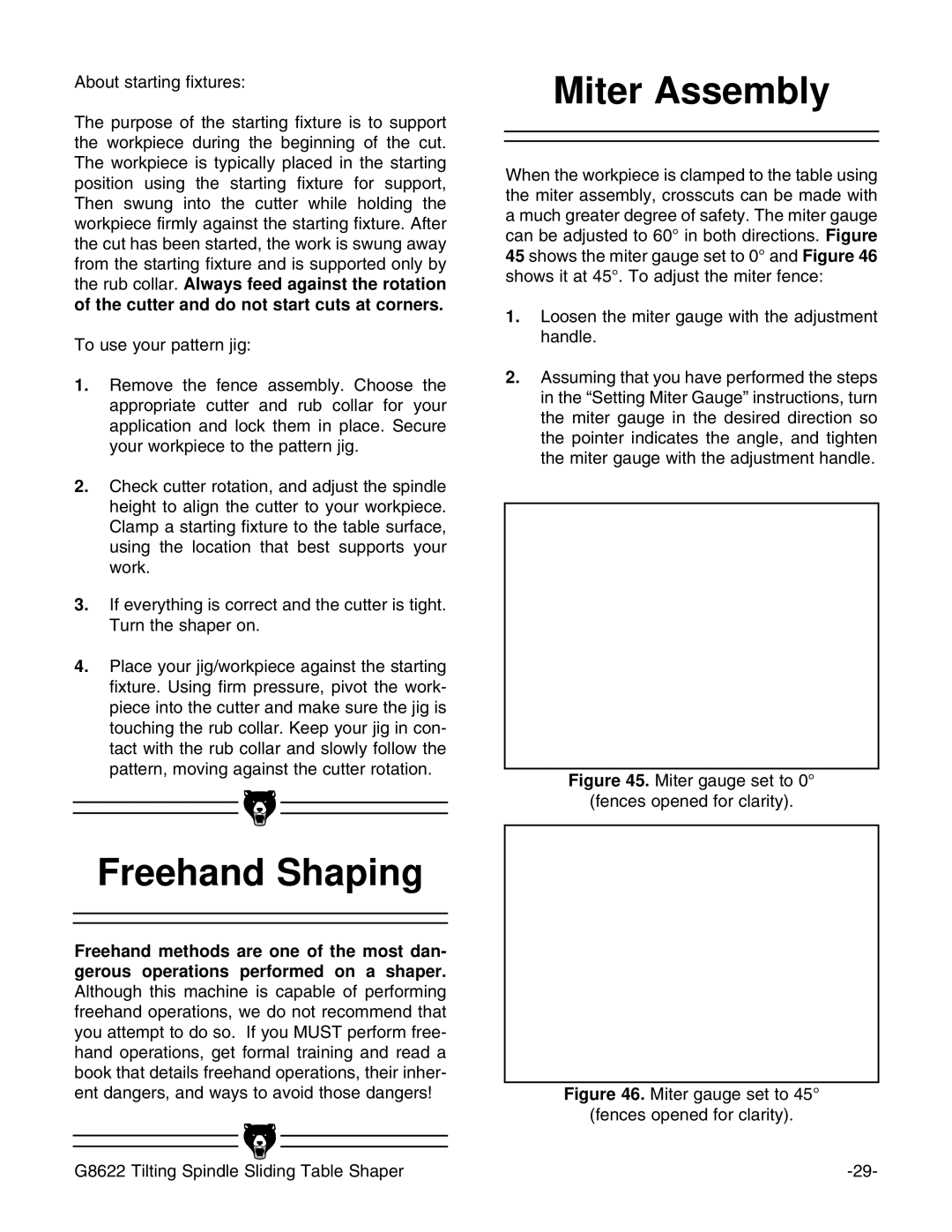
About starting fixtures:
The purpose of the starting fixture is to support the workpiece during the beginning of the cut. The workpiece is typically placed in the starting position using the starting fixture for support, Then swung into the cutter while holding the workpiece firmly against the starting fixture. After the cut has been started, the work is swung away from the starting fixture and is supported only by the rub collar. Always feed against the rotation of the cutter and do not start cuts at corners.
To use your pattern jig:
1.Remove the fence assembly. Choose the appropriate cutter and rub collar for your application and lock them in place. Secure your workpiece to the pattern jig.
2.Check cutter rotation, and adjust the spindle height to align the cutter to your workpiece. Clamp a starting fixture to the table surface, using the location that best supports your work.
3.If everything is correct and the cutter is tight. Turn the shaper on.
4.Place your jig/workpiece against the starting fixture. Using firm pressure, pivot the work- piece into the cutter and make sure the jig is touching the rub collar. Keep your jig in con- tact with the rub collar and slowly follow the pattern, moving against the cutter rotation.
Miter Assembly
When the workpiece is clamped to the table using the miter assembly, crosscuts can be made with a much greater degree of safety. The miter gauge can be adjusted to 60° in both directions. Figure 45 shows the miter gauge set to 0° and Figure 46 shows it at 45°. To adjust the miter fence:
1.Loosen the miter gauge with the adjustment handle.
2.Assuming that you have performed the steps in the “Setting Miter Gauge” instructions, turn the miter gauge in the desired direction so the pointer indicates the angle, and tighten the miter gauge with the adjustment handle.
Figure 45. Miter gauge set to 0°
(fences opened for clarity).
Freehand Shaping
Freehand methods are one of the most dan- gerous operations performed on a shaper. Although this machine is capable of performing freehand operations, we do not recommend that you attempt to do so. If you MUST perform free- hand operations, get formal training and read a book that details freehand operations, their inher-
ent dangers, and ways to avoid those dangers!Figure 46. Miter gauge set to 45° (fences opened for clarity).
G8622 Tilting Spindle Sliding Table Shaper |
